I´m starting to implement the Material Theme on my newest project, preparing it for the launch of the new L version.
I´ve been reading the Material design guidelines and found this.
UI Color Application
Choose your palette
Limit your choice of colors by choosing three color hues in the primary and one accent color in the secondary palette. The accent color may or may not need fall back options
More or less it explains how to implement those hues on the app, including the accent color but when using the main color on my app with the SwipeRefreshLayout progress bar, it doesn't feel right.

Should it be a mix between the accent color and the android:colorPrimary?
Any thoughts about this? Is there any explanation about implementing progress bars on the Material design guideline that I´ve missed?
Thanks in advance
